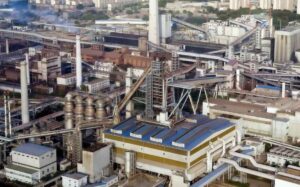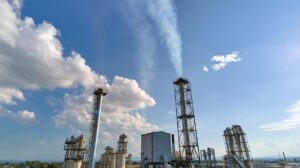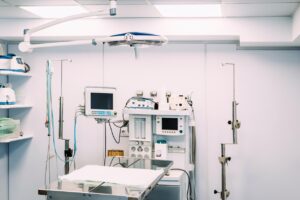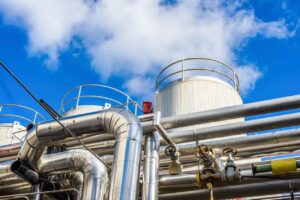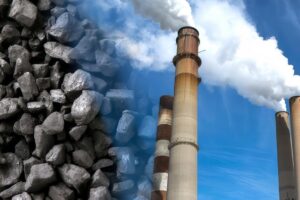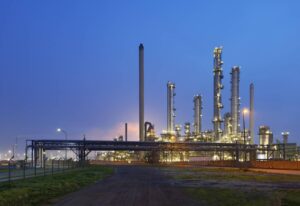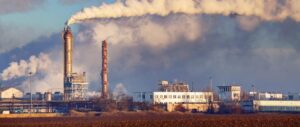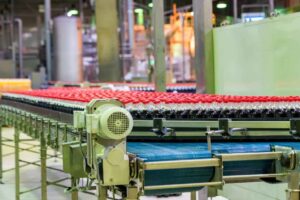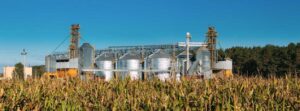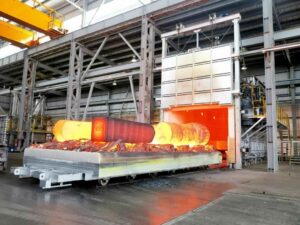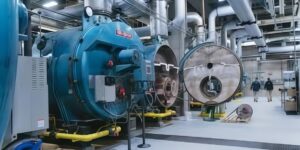The food and beverage industry is ever-expanding, with increasing pressure to meet safety standards in different countries around the world.
To help food processors achieve this, gas analyzers play a key role in determining accurate results quickly. Gas analyzers are used to measure various properties of gases – such as concentration levels and composition – making them invaluable tools for meeting tight deadlines and ensuring compliance with government regulations.
Here, we’ll explore how gas analyzers benefit operators in the food and beverage industry specifically and discuss their importance. Also, you will get a guide on what features are essential when selecting an analytical instrument for your food processing operation.
What Do Gas Analyzers Do in the Food and Beverage Industry?

Gas analyzers play an essential role in the food and beverage industry. Also, the importance of gas analyzers for power plant application is notably high. They are used to measure, monitor, and control the quality of gases used for production and processing.
Gas analyzers measure trace impurities in air or gas mixtures, including oxygen (O2), nitrogen (N2), carbon dioxide (CO2), water vapor (H2O) as well as hydrocarbons like methane.
In addition to detecting these components within a sample of gas, they are also capable of measuring pressure, temperature, and humidity.
Having precise knowledge about these different parameters helps ensure that operations in this sector can be completed safely and efficiently.
For example, O2 levels may need to be kept low when packaging foods that contain grains or other flammable ingredients to minimize the risk of fire; CO2 is often injected into beer containers during bottling; N2 is sometimes needed for freeze-drying food products; while H20 needs to be monitored closely when working with fruits and vegetables so they don’t spoil quickly due to humid conditions.
Manufacturing facilities also benefit from having access to accurate data from their application processes so that product purity can be ensured without compromising results—a task at which modern gas analyzers excel!
By connecting up multiple instruments connected over a network, operators have a centralized view of all measurements taken around their facility allowing them greater flexibility over controlling their operations than ever before!
How Do Gas Analyzers Help To Improve Food Safety?
So why is gas analysis so important in the food and beverage industry? In a nutshell, gas analyzers help improve food safety by helping operators to reduce the risk of contamination, spoilage, and/or food-borne illness.
Without gas analysis, it would be difficult—if not impossible—to detect gas contaminants in food products and maintain a safe environment for the production of goods.
Below, we’ve listed some of the key areas where gas analysis helps to improve food safety:
1. Detects Leaks:
Gas analyzers can detect leaks of potentially dangerous gases (such as carbon dioxide and ethylene) that may occur in food storage areas or production processes, helping to prevent contamination and spoilage. Food safety is improved as a result.
2. Monitor Temperature:
As the temperature is a critical factor in food safety, gas analyzers can be used to monitor the temperatures of production and storage areas. This helps identify potential problems before they become an issue.
3. Detects Hazards:
Gas-detection systems can detect hazardous levels of gases, such as carbon dioxide and ethylene. This helps to identify potential hazards before they enter the food supply chain or affect consumer safety.
4. Provides Early Warning:
Gas analyzers help provide an early warning for potential food safety issues, allowing corrective measures to be taken before the issue escalates and becomes a bigger problem.
5. Identifies Contamination:
With the help of gas analyzers, contamination in food products can be identified quickly and efficiently. This allows for corrective measures to be taken immediately to prevent further damage or health risks.
6. Maintains Quality:
Gas analyzers are capable of monitoring the quality of food products, helping to ensure that they meet industry standards and remain safe for consumption.
7. Enhances Traceability:
Food traceability is essential for ensuring consumer safety. Gas analyzers can be used to provide detailed information about the production or storage process of a particular food item, making it easier to track and identify its source in case any issues arise.
8. Monitors Storage Conditions:
The storage conditions of food products are critical to their safety and freshness. Gas analyzers can be used to monitor the temperature, humidity, oxygen levels, pressure, and other environmental factors to ensure that they remain within acceptable limits for storage.
9. Identifies Allergens:
In the event of a food recall due to the presence of an allergen, gas analyzers can be used to quickly identify its source. This helps reduce potential health risks caused by contaminated products reaching consumers.
10. Prevents Cross-Contamination:
Gas analyzers can detect levels of volatile organic compounds (VOCs) and other gases in the air to help prevent cross-contamination between food products. This helps reduce potential health risks from contaminated foods reaching consumers.
What Gases Are Typically Analyzed by Gas Analyzers?
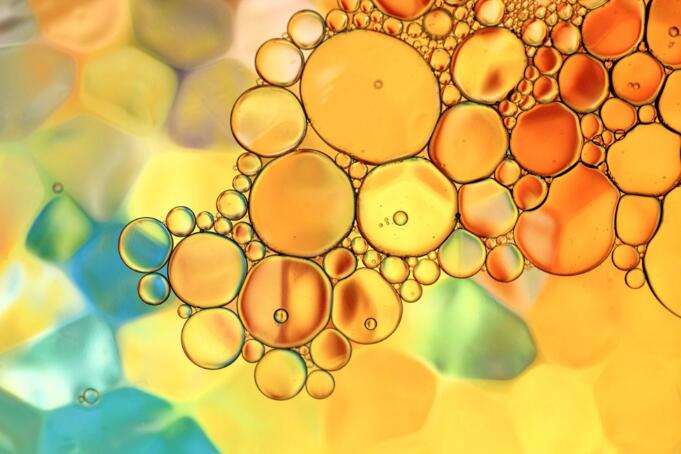
The most common gas analysis methods involve the use of gas chromatography and mass spectrometry. Gas analyzers can detect a wide range of gases. Listed below are some of the most common gases analyzed by the gas analyzers:
2. Oxygen (O2)
4. Sulfur Dioxide (SO2)
5. Carbon Monoxide (CO)
7. Hydrogen Sulfide (H2S)
8. Volatile Organic Compounds (VOCs)
9. Ozone (O3)
10. Nitrogen Dioxide (NO2)
11. Chlorine Compounds (Clx)
14. Aldehydes such as Formaldehyde (CH2O) and Acetaldehyde (C2H4O)
15. Hydrocarbons like Methane (CH4), Ethylene (C2H4) and Propane (C3H6)
16. Halocarbons like Chloroform (CHCl3), Methyl Bromide (MeBr), and Methyl Chloride (CH3Cl)
17. Siloxanes like Octamethylcyclotetrasiloxane (D4), Decamethylcyclopentasiloxane (D5) and Dodecamethylcyclohexasiloxane (D6)
18. PCBs such as Aroclor 1260, 1254 & 1016
19. Oxygenates such as Ethanol (C2H6O) and Methyl Tertiary-Butyl Ether (MTBE)
20. Oxygenated Solvents such as Acetone (C3H6O) and Methyl Ethyl Ketone (MEK or C4H8O)
21. Refrigerants such as Chlorodifluoromethane (R-22) and Dichlorotetrafluoroethane (R-114)
22. HAPs such as Benzene (C6H6), Toluene (C7H8) and Xylenes (C8H10)
23. Residual Solvents like Trichloroethylene (TCE or C2HCl3) and 1, 1, 1-Trichlorethane (CCl3CH3)
24. Oxygenates such as Methanol (CH3OH) and Ethylene Glycol (C2H6O2)
25. Polycyclic Aromatic Hydrocarbons (PAHs) such as Naphthalene (C10 H8) and Phenanthrene (C14H10)
The Benefits Of Using Gas Analyzers In The Food And Beverage Industry!
Gas analyzers can be an invaluable tool for the food and beverage industry.
By using gas analyzers, businesses can detect contamination, maintain quality standards, enhance traceability, monitor storage conditions, identify allergens, and prevent cross-contamination.
Here are some of the specific benefits gas analyzers offer food and beverage companies:
1. Safer Production Environment:
Most gases used in the food and beverage industry have high flammability, toxicity, or explosive potential. By using gas analyzers to monitor these substances at all times, companies can ensure a much safer production environment for their staff and other personnel working onsite.
2. Increased Efficiency:
Food and beverage production requires the use of a wide variety of gases. Gas analyzers allow companies to accurately monitor each gas, allowing them to make adjustments as needed for optimal efficiency in their process operations.
3. Cost Savings:
Using gas analyzers helps companies reduce their overall energy costs by ensuring that they are using the right amount of each type of gas in every production process.
Additionally, it can save them money on labor and maintenance expenses associated with monitoring multiple gases manually.
4. Improved Product Quality:
In the food and beverage industry, consistent quality is paramount. Gas analyzers allow companies to monitor gas concentrations in real-time so that they can adjust as needed for high-quality products every single time.
5. Ease Of Use:
Modern gas analyzers are easy to use and can be installed quickly, allowing companies to have them up and running in just a few hours.
Their intuitive user interface also makes it simple for operators of all skill levels to understand how the device works.
6. Increased Regulatory Compliance:
To ensure the safety of their products, companies in the food and beverage industry must comply with certain standards set by regulatory bodies.
By using gas analyzers to monitor production processes at all times, they can easily meet these requirements.
7. Enhanced Customer Satisfaction:
By using gas analyzers to maintain product consistency, food, and beverage companies can ensure that their customers always receive the same high-quality products each time they purchase. This leads directly to higher customer satisfaction ratings for the company as a whole.
8. Improved Environmental Impact:
Current gas analyzers are designed to be energy efficient and operate with minimal emissions. By using these devices, companies can reduce their overall environmental impact while still producing high-quality goods every time they run a production process.
How Can You Ensure That Your Food and Beverage Business Is Using Gas Analyzers to Their Full Potential?
Using gas analyzers for your food and beverage business can be extremely beneficial, as it allows you to make sure that your products are safe and of the highest quality.
One way to ensure that you are getting the most out of your gas analyzers is by regularly maintaining them. This includes cleaning any parts which may have accumulated dust or dirt over time, ensuring all wiring connections are sound, and calibrating the devices according to the manufacturer’s instructions.
Allowing maintenance technicians to conduct more in-depth checks regularly is also recommended as this will enable them to identify any potential issues before they become serious problems.
Another important consideration is safety when using gas analyzers in food and beverage businesses. It’s essential to follow all relevant safety regulations regarding their usage, such as wearing personal protective equipment (PPE), making sure ventilation systems are working correctly, properly storing flammable materials away from sources of ignition, etc.
Finally, those who wish to take full advantage of their gas analyzers within the industry should ensure that their staff members have been trained properly on how best to use them for maximum efficiency and accuracy.
Investing in proper training courses can help ensure that each staff member remains up to date with the latest industry standards regarding usage and accuracy so they can confidently perform day-to-day operations without running into costly mistakes or setbacks due to a lack of knowledge or experience.
Conclusion
The use of gas analyzers in the food and beverage industry can provide huge benefits for producers, resulting in more efficient production, better quality, and safer products.
Companies should make sure their instrumentation selection is up-to-date and reflects any changes that could affect the accuracy of the gas measurements.
With a reliable gas analyzer from EseGas, you can ensure your technology is up to date with modern market trends and stay ahead of potential competition.
We strive to offer the most reliable analyzers to help our customers while offering unbeatable value to reduce the total cost of ownership and increase efficiency over time.
Contact us today to learn more about how we can help you become better prepared for future market developments within the food and beverage industry.




